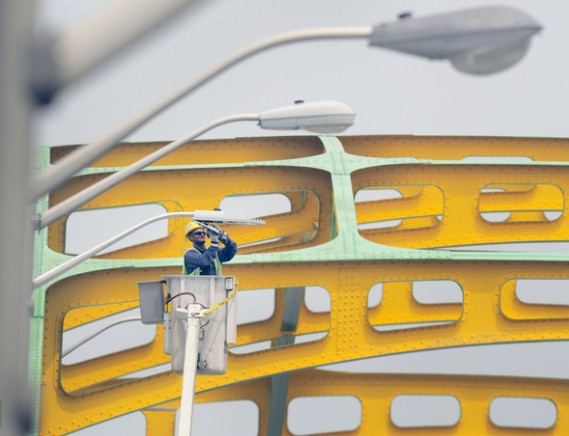Baltimore City is under the process of converting 70,000 city streetlights from sodium vapor lights to LEDs.
Baltimore expects to reap an annual savings of $1.9 million on its electric bill and $275,000 in maintenance costs. Also, advocates say the lights produce less glare and are more focused, meaning less light pollution that drowns out the night stars and can disrupt ecosystems.
However,critics say the new lights don't illuminate the area as well. City Councilman Robert W. Curran, who represents Northeast Baltimore, said that can be a public safety issue if sidewalks aren't well-lit. "They don't seem to be as effective as the vapor lights," he said.

The first phase of the three-year project is about 80 percent completed, with 8,000 new lights in place, said Ted Atwood, director of Baltimore's Department of General Services. Switching the 10,000 city-owned streetlights was the first step. Next up are the lights owned by Baltimore Gas and Electric Co.
For local and state government agencies looking for ways to trim costs, converting street and traffic lights is an opportunity for savings. A study by the Clinton Climate Initiative says streetlights can account for as much as 60 percent of a municipality's electric bill.
Maryland agencies are also making the switch. State officials estimate that LED streetlights have a life span of seven to nine years, versus three to four years for standard sodium vapor lights.
This summer, the Maryland Transportation Authority is testing LED lighting on the Key Bridge as it prepares to replace antiquated fixtures.
"MdTA decided to use LEDs on the Key Bridge for their superior vibration resistance, resulting in less maintenance costs and more energy savings," said spokeswoman Kelly Melhem. "Based on the [outcome] of this pilot testing, we will look at our overall specifications for roadway lighting."
The agency is converting lane-use signals at the Bay Bridge and the Harbor and Fort McHenry tunnels to LED-type signals and is beginning to design a new LED-based lighting system to replace the 8,680 fluorescent tubes in the Fort McHenry Tunnel.
Next year, the State Highway Administration will begin its first LED streetlight project along U.S. 50 on Kent Island. Agency spokesman David Buck said that as the technology continues to improve and costs drop, LED conversion projects will be incorporated into the budget, much in the way traffic signals are being converted to LEDs.
It's not just governments making the switch. Two years ago, the National Aquarium converted its landmark 350-foot wave sign from neon to LEDs. The result was a deeper shade of blue and a pile of green — about a 70 percent reduction in electricity costs, aquarium officials said.












